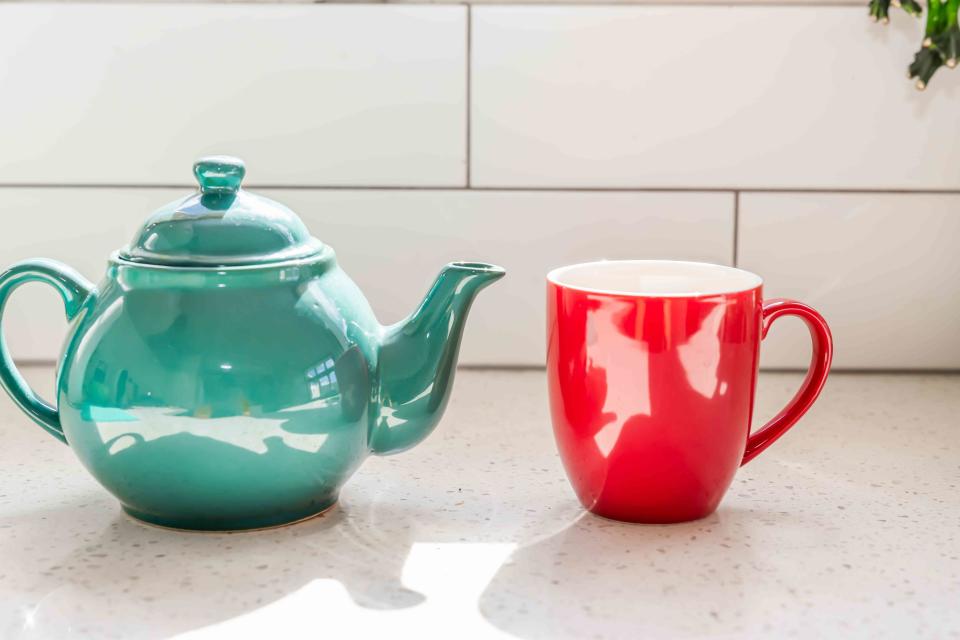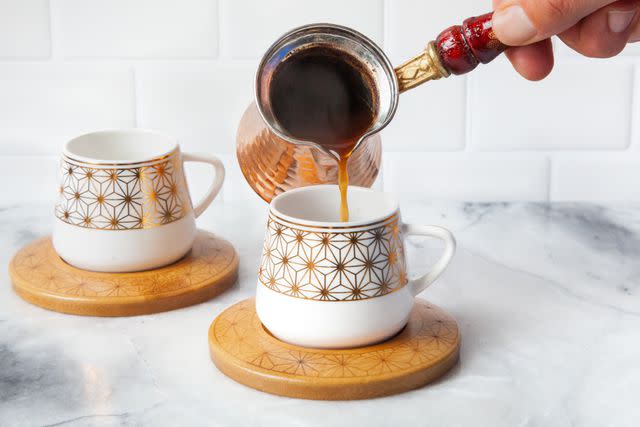Your Old Mugs May Contain Lead—Here's How You Can Tell
The experts recommend that you remember this year: 1992.

Simply Recipes / Getty Images
I don’t drink coffee, yet I have so many mugs! I’ve collected them because I like the designs and memories. That's why a recent TikTok about the possibility of vintage drinkware containing lead set off alarm bells for people like me.
The clip shows someone sobbing as they use lead test swabs to wipe old mugs. The swab tips turn reddish-orange, suggesting they are positive for lead. Before you rush to order a lead home-testing kit, here’s what you should know.
The Risk of Using Vintage Ceramic Drinkware
Lead is an element that is found naturally in soil, water, and air. It is toxic and can be dangerous, particularly to children and pregnant women, reports the U.S. Environmental Protection Agency (EPA). Lead can have an impact on nearly every organ and system in the body, leading to learning and growth issues, high blood pressure, and reduced kidney function.
Lead-based compounds have been used for decades in many products including paint and ceramics. Legislation passed in 1971 banned lead-based paint in homes, which resulted in lead exposure declining dramatically since, according to a study published in the Journal of Public Health Management and Practice. The regulations were strengthened in 1992.
In 2021, the New York City Health Department warned residents to stop using traditional, non-food-safe ceramic ware to cook, prepare, or serve food. The agency reported that the ceramic ware contained lead levels “thousands of times greater than the allowable limit” leading to 15 known cases of lead poisoning. Health officials suggested that people stop using items if they aren’t sure they are food-safe and consider getting a blood test if they used these items regularly.

Simply Recipes / Irvin Lin
How Old Is Old?
“Low fire glazed ceramics especially those imported from Mexico are most likely to have lead, but craft products like those adorable mugs you made in third grade are also a high risk,” says Mary Jean Brown, an adjunct assistant professor of social and behavioral sciences at the Harvard T.H. Chan School of Public Health and former chief of the Healthy Homes and Lead Poisoning Prevention Branch at the Centers for Disease Control and Prevention (CDC).
“Antique dishware especially if it is cracked, pitted, or if the glaze is worn off (most of these dishes are not dishwasher safe) could also leach lead into foods. Never store acidic liquids or foods in these cups or pitchers.”
Brown says it’s safest to stop using dishware made before the 1992 new lead requirements, particularly if they are brightly colored, folk ceramics, or damaged.
Swab Your Mugs for Lead
If you’re enamored with your mug—or just curious—consider a lead testing kit. You can buy them for about $10 to $20 online, but reviews are mixed.
The U.S. Consumer Product Safety Commission (CPSC) evaluated consumer lead testing kits on paint and other home products in 2007. They did 104 tests and more than half resulted in false negatives, and two were false positives.
“CPSC staff does not recommend that consumers rely on home lead test kits,” says CPSC spokesperson Patty Davis. “Lead test kits are not reliable and can give false negatives and false positives.”
Brown says the problem with the test swabs is that they don’t tell you the actual concentration of lead in an item. “It may have lead content below the legal limit of 90 parts per million and still give a positive result,” she says. “As with any in-home test, it is important to follow the directions carefully.”
You can have items tested in a lab, but testing usually destroys the object. Instead, she suggests finding some other use for your pretty stuff. “In an abundance of caution I would use such objects for decorations and consider putting holes in cups and pitchers so they cannot be used to serve or store liquids.”
Read the original article on Simply Recipes.

